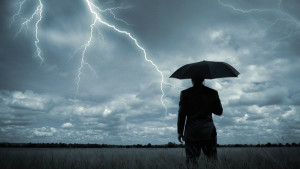In The Porn Phenomenon, the report of a study by the research organisation Barna Group, several interviews were conducted with American teens, and young and older adults on their attitudes and use of pornography.
“Teens and young people are living in an environment where porn is more acceptable and more ubiquitous than ever before,” observed Roxanne Stone, Barna’s editor-in-chief. “As access to pornography has increased, the stigma toward it has seemingly decreased. Watching pornography is perceived by many as simply an individual choice. Yet when it comes to assessing porn’s impact on society more broadly, people are more apt to hold a negative view. Which presents an interesting paradox of belief: Porn is fine for individuals but bad for society.”
A new type of porn
Porn today, however, isn’t exclusively limited to a “professional” industry. With improvements in technology and the proliferation of affordable, good quality photographic and videographic equipment, so-called revenge porn is also on the rise. Despite how it sounds, “revenge porn” isn’t a pornographic video with a script based around revenge. Revenge porn, according to website End Revenge Porn, is “a form of sexual abuse that involves sharing nude or sexually explicit photos and videos of someone without their consent. Also known as cyber-rape or non-consensual pornography, [it is] usually posted [online] by a scorned ex-lover or boyfriend, wanting revenge after a relationship has turned bitter.”
Usually salacious photos and videos of the lover or spouse are submitted to websites, some of which exist solely for that purpose. Some of these sites are anonymous, but most allow submitted material to include the victim’s full name and social media account details. This gives strangers opportunities to find and potentially stalk the victims. Then some of the sites will even charge the victim a high fee to have their images or videos removed.
Jo Manouk, a domestic violence counsellor and support worker, has worked with many victims of revenge porn. She says it’s “used as a tool to belittle, humiliate and have power over women, and is a form of domestic violence.” So instead of hitting women these men vent their anger and rage by using revenge porn as an outlet.
Manouk goes on to explain that revenge porn isn’t usually a one-off incident but rather part of a cycle of abuse that women experience in these types of dysfunctional relationships. Therefore, in an attempt to take back control once the relationship has ended, men use revenge porn to intimidate and breed fear in the women. Disturbingly, Manouk says, “The greatest motivation the perpetrator uses is to destroy and punish the partner.”
Victims of revenge porn include women and men of all ages. There are even websites for wives to share photos of the women with whom they suspect their husbands are having affairs. While these photos aren’t always explicit, they include personal information such as the victims’ names and locations, with stories from the scorned wives detailing how they found out about the affairs.
Essentially, revenge porn is intended to cause significant embarrassment, harassment and shame, and the effects can be devastating. Victims have had to deal with the loss of employment, severe trust issues, strain in future intimate relationships and blame from others for allowing the photos to be taken even though many victims are actually unaware they were being photographed. The victims not only feel humiliated but also condemned and judged by society, and the trauma is reinforced each time the images resurface on the web. In November 2013, 17-year-old Brazilian girl, Julia Rebecca, was so scarred she took her own life after a sex tape depicting her with a male and female, also minors, was posted online.
Revenge porn and the law
Thankfully, legislation is beginning to catch up with the revenge porn phenomenon. Hunter Moore, who coined the phrase “revenge porn” when he launched a revenge-porn related website in 2010, was jailed for two-and-a-half years in 2015 for stealing, distributing, enabling and sharing thousands of nude pictures.
A former boyfriend or girlfriend in what used to be a trusting relationship took the photos of these unsuspecting victims, but when the relationships ended bitterly, the images found their way into Moore’s sinister hands. Sometimes, the pictures were stolen by hackers and in others, they were Photoshopped with one person’s face attached to another person’s nude body. These images were so well manipulated that visitors to the website couldn’t detect the difference.
In a federal court in California, the 29-year-old sat in silence as the families of his victims watched on, waiting for justice to be served. Moore didn’t react when the judge read out his sentence, nor did he show any remorse while listening to his victims’ impact statements.
In the same year, California also launched the first criminal prosecution of a revenge porn site operator. Twenty-eight-year-old Kevin Bollaert was convicted of 27 offences, including extortion and identity theft. He’d published nude and explicit pictures of women online without their consent, then extorted from them hundreds of dollars to remove the images.
Bollaert’s website had enabled users to anonymously send intimate pictures of their ex-partners, with the full intention of wanting to shame or embarrass them. Bollaert required users to include the victim’s full name, location and age and their Facebook profile link.
In the UK, people who share explicit images without consent can be jailed for up to two years under new laws that came into effect last year. In November 2014, 21-year-old Luke King shared explicit photos of his girlfriend on the phone app, WhatsApp, and was jailed for 12 weeks. He became the first person in Britain to be prosecuted for posting revenge porn. Since then, the UK government has launched a dedicated helpline for victims. The helpline works with law enforcement and media companies to remove content where possible.
In Australia, the state of Victoria has made it a criminal offence to share images without the person’s consent and offenders can face two years in prison. However, other states use older legislation created before the rise of revenge porn. In New South Wales, people are charged under the Crimes Act 1900 for publishing indecent articles, although the state is looking to revise the adequacy of these laws. In South Australia, broader offences under the Summary Offences Act 1953 on distributing an invasive image can include revenge porn offences.
Several major search engines have also created policies on revenge porn and links to search removal tools. Google has even gone so far as to promise to “honour requests from people to remove nude or sexually explicit images shared without their consent from Google search results.”
Moving on
At its core, revenge porn is about perpetrators feeling such a sense of injustice about the way their relationships had soured, that they decided to take matters into their own hands. The problem is that revenge never ends well, for both the perpetrator as well as the victim. The perpetrator may feel vindicated, but such satisfaction is often short-lived.
While legislation and websites are slowly taking steps to deal with revenge porn and illegal posting of images, moving on as a victim can be an even longer and more painful process, especially when it affects aspects of life such as family, friends, work and future relationships.






